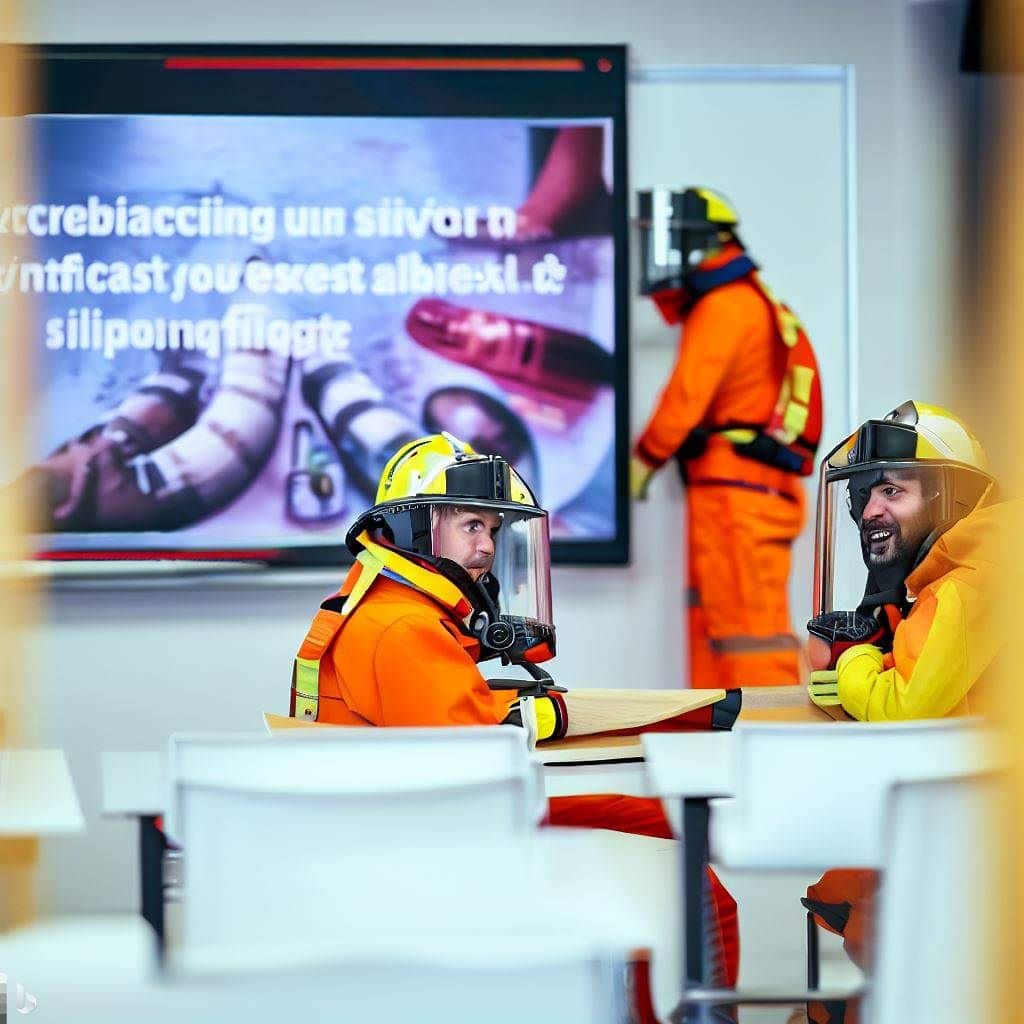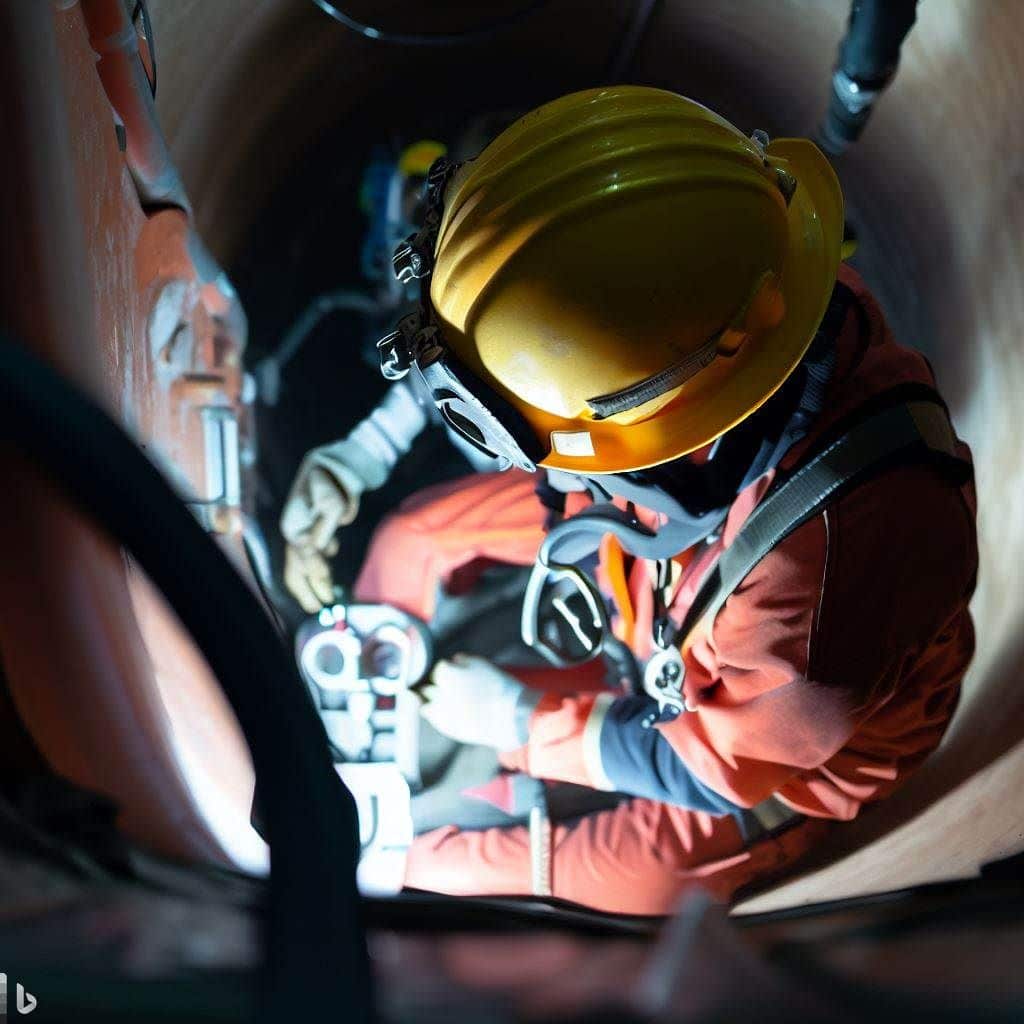The Ins and Outs of Confined Space Entry: Unraveling the Key Training Requirements for Success
Entering and working in confined spaces is a dangerous and challenging task that requires specialized knowledge and skills. It is essential for workers who perform tasks in these environments to receive comprehensive training to ensure their safety, as well as the safety of their colleagues and the integrity of the facilities they work in.
This article will explore the key elements of confined space entry training, discuss the roles and responsibilities of different personnel involved, and outline the essential regulations and personal protective equipment required for successful and safe confined space work.
As someone who has personally undergone confined space entry training, I understand the importance of being well-prepared and knowledgeable about the risks and challenges associated with entering and working in confined spaces. This article overviews the essential training components individuals need to succeed in this challenging field.
Understanding Confined Spaces: Definition and Types
Confined spaces are defined as areas that are not designed for continuous occupancy, have limited or restricted access and egress, and may present a risk to the safety and health of workers. These spaces can be found in various industries and settings, such as construction sites, industrial facilities, and utility systems.
There are two primary types of confined spaces: non-permit required and permit-required. Non-permit-required confined spaces do not have the potential to contain hazardous atmospheres or engulfment hazards and do not require a formal entry permit. However, workers must still be aware of possible risks and receive appropriate training.
On the other hand, permit-required confined spaces possess one or more characteristics: a hazardous atmosphere, materials that can engulf a worker, inwardly converging walls, or a floor that slopes downward and tapers to a smaller cross-section. These spaces require a confined space entry permit, and workers must complete specialized training before being allowed to enter.

Importance of Confined Space Entry Training
Confined space entry training is crucial to ensure the safety and well-being of workers who enter these potentially hazardous environments. Inadequate training can result in accidents, injuries, and even fatalities.
Proper training helps workers identify the risks and hazards of confined spaces, understand their roles and responsibilities, and follow appropriate safety procedures. This knowledge is essential for preventing accidents and maintaining a safe working environment.
Moreover, confined space entry training is not only important for the safety of workers but also for meeting regulatory requirements. Employers are responsible for providing adequate employee training and ensuring compliance with local, state, and federal regulations governing confined space entry.
Key Components of Confined Space Entry Training
Confined space entry training should cover various topics to ensure workers are fully prepared to enter and work in these challenging environments. Some of the key components of confined space entry training include:
- Identifying confined spaces: Workers must recognize confined spaces, understand their characteristics, and differentiate between non-permit-required and permit-required spaces.
- Hazard recognition: Training should cover the hazards associated with confined spaces, such as hazardous atmospheres, engulfment hazards, and physical hazards like extreme temperatures or poor visibility.
- Roles and responsibilities: Workers must understand the specific roles and responsibilities of confined space entrants, attendants, and supervisors.
- Entry permits and procedures: Training should include information on the permit system, entry procedures, and required documentation for permit-required confined spaces.
- Personal protective equipment: Workers must know what types of PPE are needed for confined space entry and how to properly use and maintain this equipment.
- Emergency response and rescue planning: Training must cover the essential elements of emergency response and rescue planning, including communication, escape routes, and rescue procedures.
Identifying Potential Hazards in Confined Spaces
Confined spaces present a variety of hazards that can pose significant risks to workers. Some of the most common hazards associated with confined spaces include:
- Hazardous atmospheres: These may include toxic gases, vapors, or fumes, as well as oxygen-deficient or oxygen-enriched environments.
- Engulfment hazards: Engulfment occurs when a worker is surrounded and trapped by a substance, such as water, sand, or grain.
- Physical hazards: These may include extreme temperatures, poor visibility, noise, vibration, or unstable structures.
- Biological hazards: These may include exposure to harmful microorganisms, such as bacteria, viruses, or fungi.
- Mechanical and electrical hazards may include moving machinery, exposed electrical components, or pressurized systems.
During confined space entry training, workers should learn how to recognize and assess these hazards and ways to mitigate them.
Roles and Responsibilities of Confined Space Entrants, Attendants, and Supervisors
In confined space entry operations, there are three primary roles: the entrant, the attendant, and the supervisor. Each of these roles carries specific responsibilities that contribute to the overall safety of the operation.
- Confined space entrants are the workers who enter and perform tasks in the confined space. Their responsibilities include:
- Following established entry procedures and protocols
- Wearing appropriate personal protective equipment
- Communicating with the attendant about any changes in conditions or hazards
- Exiting the confined space when instructed to do so or when conditions become unsafe
- Confined space attendants are responsible for monitoring the safety of the entrants and the conditions inside the confined space. Their duties include:
- Ensuring that entry permits are in place and entry procedures are followed
- Continuously monitoring the atmosphere inside the confined space
- Maintaining communication with entrants and supervisors
- Initiating rescue procedures if necessary
- Confined space supervisors are responsible for overseeing the entire confined space entry operation. Their responsibilities include:
- Ensuring that workers are adequately trained and qualified
- Verifying that appropriate permits, procedures, and equipment are in place
- Monitoring the overall safety of the operation
- Ensuring that emergency response and rescue plans are in place and understood by all personnel
Confined Space Entry Permits and Regulations
In many jurisdictions, specific regulations and standards govern permit-required confined space entry. These regulations outline the requirements for entry permits and formal documents that authorize workers to enter a permit-required confined space.
Confined space entry permits typically include information such as the location and description of the confined space, the purpose of the entry, the names of authorized entrants, attendants, supervisors, atmospheric monitoring results, and required personal protective equipment.
Additionally, permits outline the specific hazards associated with the confined space and the measures taken to mitigate these hazards. Workers need to understand the permit system and the relevant regulations and standards to ensure that they are in compliance and maintain a safe working environment.
Personal Protective Equipment (PPE) for Confined Space Entry
Appropriate personal protective equipment is critical for ensuring the safety of workers during confined space entry operations. Some common types of PPE used in confined spaces include:
- Respiratory protection: Depending on the atmosphere inside the confined space, workers may need to use air-purifying or supplied air respirators.
- Protective clothing: Workers may need to wear specialized clothing, such as chemical-resistant suits or insulated garments, to protect against hazards like extreme temperatures or chemical exposure.
- Fall protection: In some cases, workers may need to use harnesses, lifelines, or other fall protection equipment to prevent falls while entering or exiting the confined space.
- Eye and face protection: Goggles, face shields, or other protective gear may be necessary to protect against flying debris, chemical splashes, or other hazards.
- Hearing protection: Earplugs or earmuffs may be needed to protect against loud noises in some confined spaces.
Workers must be trained in properly selecting, using, and maintaining their PPE to ensure optimal protection.
Emergency Response and Rescue Planning in Confined Spaces
In an emergency in a confined space, a well-developed rescue plan is crucial to ensure the safety of workers and facilitate a swift and efficient response. Key elements of an emergency response and rescue plan include:
- Communication: Establishing reliable communication methods between entrants, attendants, and supervisors to quickly relay information during an emergency.
- Escape routes: Identifying and marking safe exit routes for workers to evacuate the confined space quickly.
- Rescue equipment: Ensuring appropriate rescue equipment, such as harnesses, winches, and stretchers, is readily available and in good working condition.
- Rescue personnel: Designating trained and qualified personnel to perform rescue operations, including both on-site and off-site responders.
- Training and drills: Regularly practice emergency response and rescue procedures to ensure all personnel know their roles and responsibilities.

Final Thoughts on Confined Space Entry Training for Success
Confined space entry training ensures workers’ safety and well-being in these challenging environments. By understanding the hazards associated with confined spaces, learning to identify and assess risks, and becoming familiar with the roles and responsibilities of all personnel involved, workers can successfully navigate the complexities of confined space entry and contribute to a safer working environment.
Conclusion
In conclusion, confined space entry training is crucial to worker safety in many industries. By understanding the key training elements, including hazard recognition, roles and responsibilities, permits and regulations, personal protective equipment, and emergency response and rescue planning, workers can be better equipped to enter and work in confined spaces safely and efficiently.
Frequently Asked Questions:
What is a confined space?
A confined space is an area that is not designed for continuous occupancy, has limited or restricted access and egress, and may present a risk to the safety and health of workers.
What is the difference between non-permit-required and permit-required confined spaces?
Non-permit-required confined spaces do not have the potential to contain hazardous atmospheres or engulfment hazards, while permit-required confined spaces possess one or more of these characteristics.
What are some common hazards associated with confined spaces?
Common hazards include hazardous atmospheres, engulfment hazards, physical hazards like extreme temperatures or poor visibility, biological hazards, and mechanical and electrical hazards.
What are the roles and responsibilities of confined space entrants, attendants, and supervisors?
Entrants perform tasks in the confined space, attendants monitor the safety of the entrants and the conditions inside the space, and supervisors oversee the entire operation.
What is the importance of personal protective equipment in confined space entry?
PPE protects workers from hazards in confined spaces, such as hazardous atmospheres, extreme temperatures, or chemical exposure.
